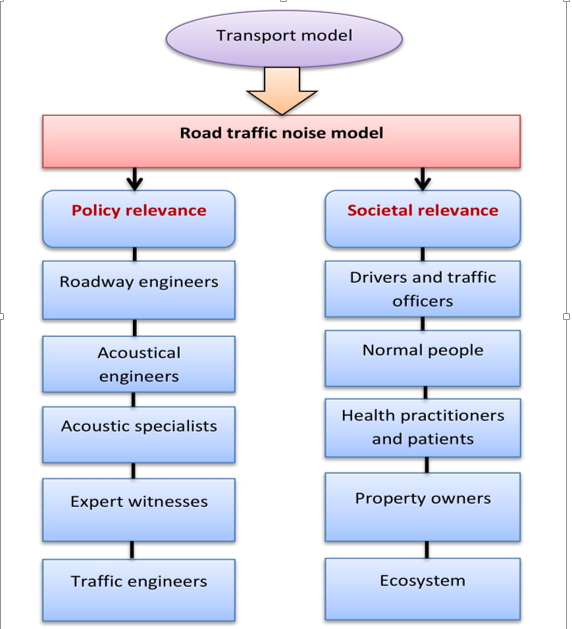Document Type : CASE STUDY
Authors
1 Department of Environmental Engineering, the Air Pollution Group, Faculty of Engineering, Kish International Campus, University of Tehran, Iran
2 Department of Environment, Faculty of Environment, University of Tehran, Iran
3 Department of Acoustics, Faculty of Physics, Sharif University of Technology, Tehran, Iran
Abstract
BACKGROUND AND OBJECTIVES: Road traffic noise is a matter of challenge for both people and policymakers. For instance, the price of lands/houses which are close to road traffic noise is reduced. The key objective of this study is to propose a conceptual model to illustrate details of a road traffic noise model, along with its policy and societal relevance. The second objective is to consider the honking of horns in such a conceptual model, as honking is a remarkable traffic noise factor, however, it has been neglected in some noise abatement policies.
METHODS: By the use of previously proposed traffic noise models, some attempts were made to figure out how the models were applicable in minimizing road noise and how they would be helpful for environmentalists in conducting Environmental Impact Assessment. The proposed models were used to design a conceptual model explaining how policymakers and people in the urban areas may implement the traffic noise models.
FINDINGS: 5 groups of policymakers including roadway engineers, acoustical engineers, acoustic specialists, expert witnesses, and traffic engineers; and 5 groups in the society comprising drivers, people, health practitioners, property owners, and ecosystem may benefit from the traffic noise models. Finally, a conceptual model entailing 3 actors of a traffic noise model (meteorological, traffic, and infrastructure factors) and its 2 outputs i.e. equivalent and maximum noise levels were obtained.
CONCLUSION: Given the conceptual model derived from the road traffic noise models, one is capable of understanding their policy and societal relevance. It is recommended dynamic road noise maps of urban areas be obtained using the models during various times of day and night so that number of inhabitants in different noise spectrums of the map to be specified. Such a noise map is beneficial for both people and policymakers.
Graphical Abstract
Keywords
Main Subjects
This article is licensed under a Creative Commons Attribution 4.0 International License, which permits use, sharing, adaptation, distribution and reproduction in any medium or format, as long as you give appropriate credit to the original author(s) and the source, provide a link to the Creative Commons license, and indicate if changes were made. The images or other third party material in this article are included in the article’s Creative Commons license, unless indicated otherwise in a credit line to the material. If material is not included in the article’s Creative Commons license and your intended use is not permitted by statutory regulation or exceeds the permitted use, you will need to obtain permission directly from the copyright holder. To view a copy of this license, visit: http://creativecommons.org/licenses/by/4.0/
PUBLISHER’S NOTE
Tehran Urban Planning and Research Center remains neutral with regard to jurisdictional claims in published maps and institutional afflictions.



Send comment about this article